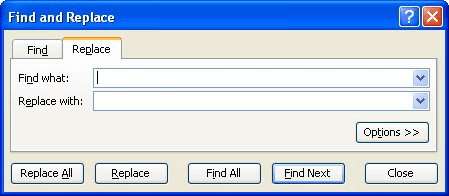Please Note: This article is written for users of the following Microsoft Excel versions: 97, 2000, 2002, and 2003. If you are using a later version (Excel 2007 or later), this tip may not work for you. For a version of this tip written specifically for later versions of Excel, click here: Relative References to Cells in Other Workbooks.
Written by Allen Wyatt (last updated June 28, 2025)
This tip applies to Excel 97, 2000, 2002, and 2003
When Stephen is creating a formula and refers to a cell in another worksheet in the same workbook, the reference is always relative (A1). However, when he refers to a cell in another workbook, the reference is always absolute ($A$1). Stephen wonders if there is a way of getting this to be automatically relative (A1) without having to go into the cell and press F4 three times.
The typical way to deal with this situation is to simply edit the reference in the formula, as you are effectively doing. There are, however, two other ways that you can approach this problem, if you desire.
The first idea is to simply create all your formulas, but leave the absolute references in place. Then, as a "final" step, use Find and Replace to get rid of the dollar signs in the formulas. All you need to do is follow these steps:

Figure 1. The Replace tab of the Find and Replace dialog box.
That's it; all the dollar signs in the selected cells are deleted, leaving relative references, as desired. If you have some absolute references in those cells that you want to remain, then you should use the controls in the Find and Replace dialog box to step through each instance and do the replacement, as desired.
The second idea is quite novel, really. If your references are all to the same worksheet in the external workbook, then follow these general steps:
What happens with these steps is that when you move the worksheet back to its original workbook, Excel updates the first part of the formula references to include the information about the external workbook. It does not, however, change the cell references in those formulas from relative to absolute.
ExcelTips is your source for cost-effective Microsoft Excel training. This tip (11225) applies to Microsoft Excel 97, 2000, 2002, and 2003. You can find a version of this tip for the ribbon interface of Excel (Excel 2007 and later) here: Relative References to Cells in Other Workbooks.

Dive Deep into Macros! Make Excel do things you thought were impossible, discover techniques you won't find anywhere else, and create powerful automated reports. Bill Jelen and Tracy Syrstad help you instantly visualize information to make it actionable. You’ll find step-by-step instructions, real-world case studies, and 50 workbooks packed with examples and solutions. Check out Microsoft Excel 2019 VBA and Macros today!
If you have a lot of values in a single row, you might want to pull the last non-zero value from that row. There are a ...
Discover MoreWant to add up all the digits in a given value? It's a bit trickier than it may at first seem.
Discover MoreMany businesses organize information according to calendar quarters, especially when it comes to fiscal information. ...
Discover MoreFREE SERVICE: Get tips like this every week in ExcelTips, a free productivity newsletter. Enter your address and click "Subscribe."
There are currently no comments for this tip. (Be the first to leave your comment—just use the simple form above!)
Got a version of Excel that uses the menu interface (Excel 97, Excel 2000, Excel 2002, or Excel 2003)? This site is for you! If you use a later version of Excel, visit our ExcelTips site focusing on the ribbon interface.
FREE SERVICE: Get tips like this every week in ExcelTips, a free productivity newsletter. Enter your address and click "Subscribe."
Copyright © 2026 Sharon Parq Associates, Inc.
Comments